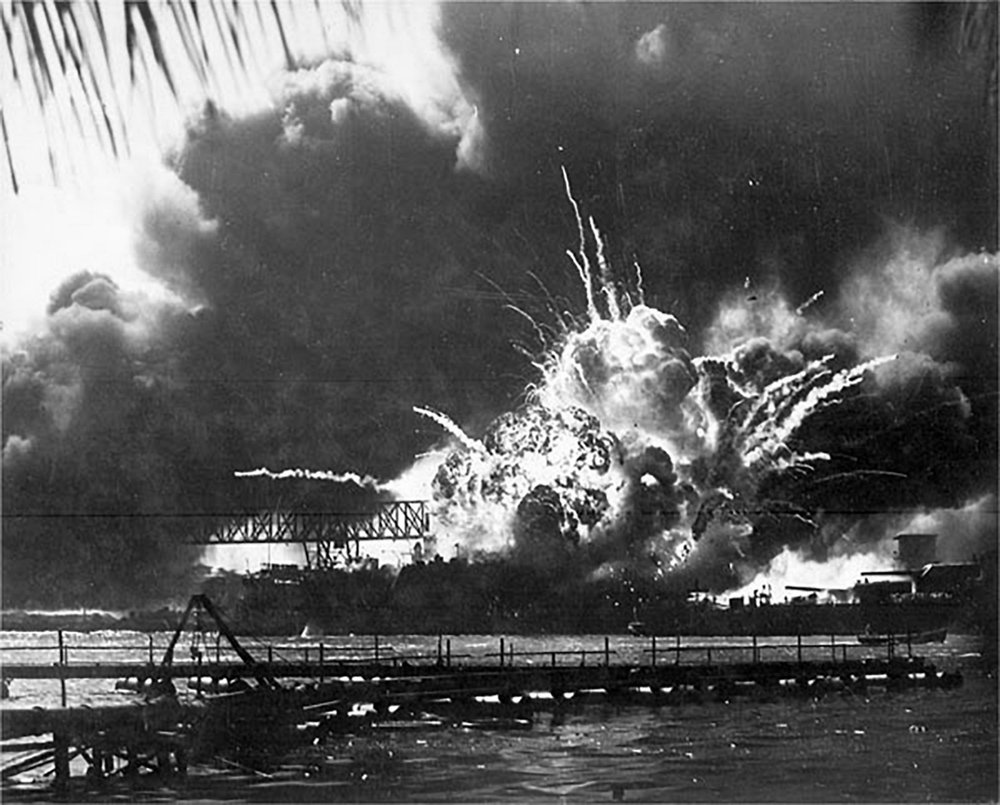
December 1941. For the last two years, a series of border wars between a newly militarized Germany and its neighbors on all sides- Poland, France, Denmark, Norway, Belgium, the Netherlands, and even Russia with the launch of Operation Barbarossa – has placed Adolf Hitler at the head of a new empire that stretched from the arctic circle to the Mediterranean sea.
In Italy, Fascist leader Benito Mussolini has allied himself with Hitler, forming the “Pact of Steel.”
Secret talks have even been taking place between the Germans and the Japanese.
Hitler has been pressing the Japanese imperial government to join him in his attack on the Soviet Union. His panzers have blitzed across the vast steppe to the very gates of the Kremlin in Moscow. He knows that if he can catch Stalin on both sides, he can stretch the Red Army thin.
But the Japanese have different plans, and signed a nonaggression pact with the communist regime in April.
One of the big disadvantages of the Japanese home islands, especially as they seek to expand in the early twentieth century, is that their supply of natural resources. A modern industrial nation requires raw materials to fuel its production, both civilian and military. Steel, oil, rubber, and coal are all required.
To fuel its war machine, divided in a fierce rivalry between the Imperial Japanese Army (IJA) and the Imperial Japanese Navy (IJN), Prime Minister Hideki Tojo has already invaded Manchuria, setting up a puppet state of Manchukwo, and is currently prosecuting a brutal war of attrition against the Chinese.
According to historian John Toland, the Japanese had a dilemma. “How could [the United States,] a nation rich in resources and land, and free from fear of attack, understand the position of a tiny, crowded island empire with almost no natural resources, which was constantly in danger of attack from a ruthless neighbor, the Soviet Union?”
In fact, the Japanese have skirmished with the Red Army and found them to be quite formidable. Stalin’s fears of being encircled will not come to be, and to his immense relief his Siberian divisions will come to the defense of Moscow instead.
But why have the Japanese ceased to be a threat to the Soviet Union?
They’ve turned their sights to the West.
On the morning of December 7th, 1941, the Imperial Japanese Navy, under the command of Admiral Isoroku Yamamoto, launched a surprise attack on the US naval base at Pearl Harbor, on the Hawaiian island of Oahu.
Because of a mix-up in communications, the Japanese diplomatic mission in Washington D.C. did not deliver the declaration of war to the U.S. embassy until after the attack was underway.
The nation was furious.
President Franklin Roosevelt delivered a famous address, in which he called December 7th “a day that will live in infamy”:
“No matter how long it may take us to overcome this premeditated invasion, the American people in their righteous might will win through to absolute victory.
I believe that I interpret the will of the Congress and of the people when I assert that we will not only defend ourselves to the uttermost but will make it very certain that this form of treachery shall never again endanger us.
Hostilities exist. There is no blinking at the fact that our people, our territory, and our interests are in grave danger.
With confidence in our armed forces with the unbounding determination of our people we will gain the inevitable triumph so help us God.”

